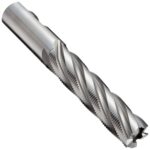Making The Most Out of Take-Back Programs
Early years of environmental concern proclaimed recycling as an end-all-be-all solution to all problems. Unfortunately, without the support of a few hyper-local organizations, recycling couldn’t be executed on the same scale as products are created. Now, with Waste Electrical and Electronic Equipment (WEEE) compliance mandates, businesses and manufacturers themselves are concerned with recycling. This has been operationalized in the form of Take-Back programs.
Such a program is a hallmark of any sustainable business in tech, and has emerged as a crucial component in compliance. After all, such a program benefits all parties involved! Largely, a take-back program is a systematic process of collecting and recycling discarded electronic products. This involves anticipating any previously released devices at the end of their life spans, but also the potential of irreparable recent tech.
Here’s how your business can make the most out of Take-back programs:
How to Develop a Take-Back Program?
The perfect Take-Back program begins from the inception itself. Strategic planning and collaboration are required here. First, assess the types of electronics produced by your business. Also, understand where these products are in their life-cycle. Is there a chance a consumer discards them as soon as an upgrade comes out? Or are the products valuable enough to survive new releases? Understanding this helps anticipate the kind of products expected to be returned in take-backs.
The next step involves not only setting up collection points but also actively advertising the program’s existence. Remember, the success of a take-back program lies not only with the business but also with consumers being aware and taking full advantage of the program. Advertising a take-back program thus educates general audiences, along with establishing a positive brand image.
Benefits of a Take-Back Program
Earlier recycling efforts fell flat because they were one-sided. The demand for recycling was not met with a sufficient system to process e-waste. When a modern take-back program is efficiently set up, a business can facilitate easier recycling. This process specifically involves harvesting potential rare materials used in the manufacturing of devices. These materials can then be reused in future products, thus promoting a cyclical economy, while also keeping costs down. Such programs also boost positive PR as fewer products end up in landfills and potentially harm the environment!
A take-back program is one of the most popular ways for businesses to become WEEE Compliant. In this regard, you can avail Circular Compliance WEEE compliance services! These experts can set up an efficient program best suited for your business, while also helping you identify other methods to be compliant!






